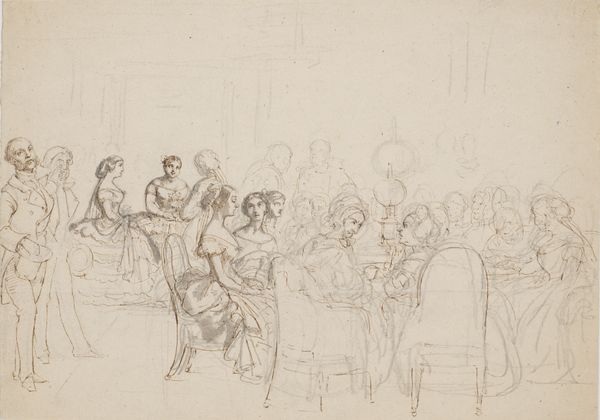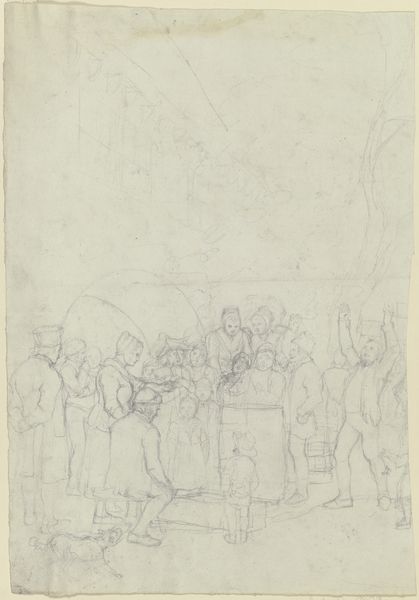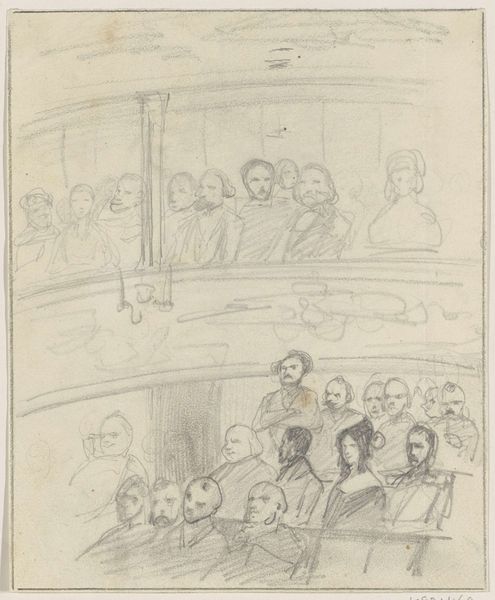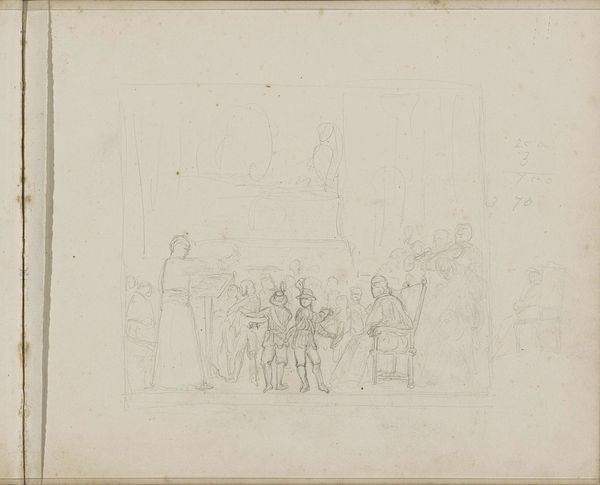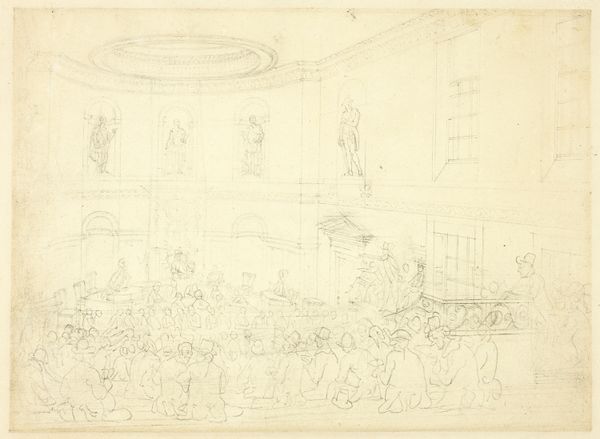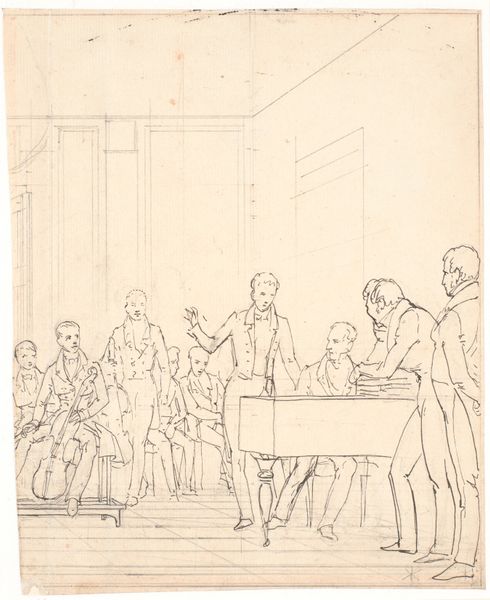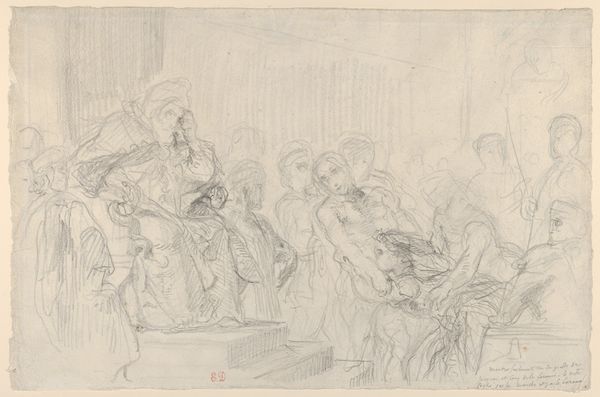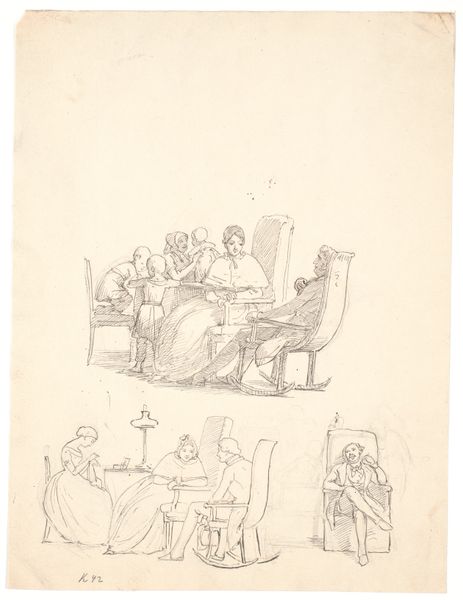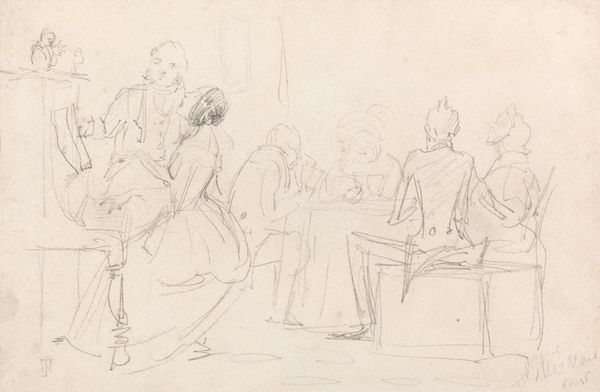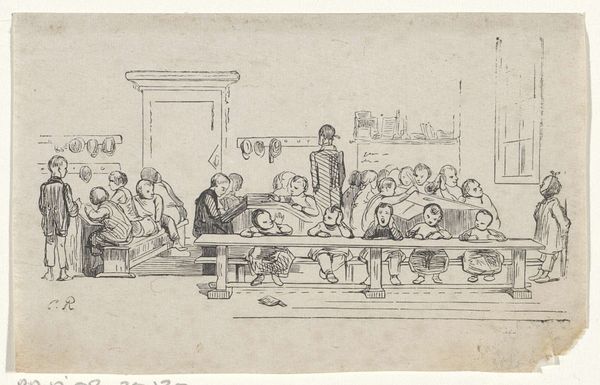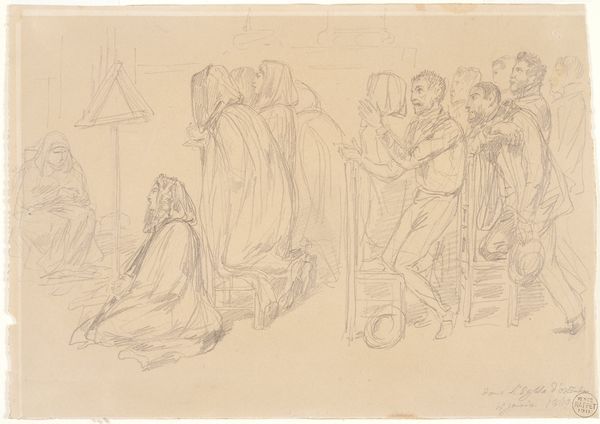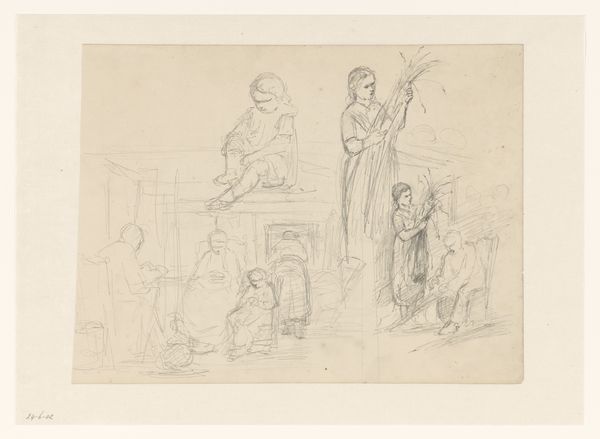
Zweiter Entwurf für das Gruppenbildnis der deutschen Künstler im Café Greco in Rom, rechte Hälfte 1817
0:00
0:00
drawing, pencil
#
portrait
#
drawing
#
group-portraits
#
romanticism
#
pencil
#
history-painting
Copyright: Public Domain
Editor: This is Carl Philipp Fohr's "Second Draft for the Group Portrait of German Artists in the Caffè Greco in Rome, Right Half," created in 1817 using pencil. It’s unfinished, like a ghostly gathering. What catches your eye? Curator: Well, as a materialist, my focus goes straight to the labor inherent in this drawing, even in its incomplete state. Think about the sourcing of the graphite, its refinement into pencils, the physical act of applying it to the paper – the sheer manual effort needed for such a large, detailed composition, especially in 1817! How do you think the ready availability, or lack thereof, of drawing materials affected the scope of a work like this? Editor: I never considered the pencil itself. I guess easier access would make a larger work like this less daunting. But the location seems significant too, right? A cafe in Rome? Curator: Absolutely! "Café Greco" wasn't just a backdrop. It was a hub of cultural exchange. Now, imagine the social conditions of these artists. What materials – both artistic and societal – were available to them in that specific time and location? Consider the economics of art production during the Romantic period, who had the resources to travel and spend time in Rome? Editor: So it's not just the drawing, but the conditions that made it possible. Curator: Precisely. We should ask: how did the café’s environment—its status, its social currency— shape this artistic rendering? How did they secure or utilize such settings to nurture ideas and promote creation? The materials involved include access and cultural status, impacting art in the Romantic period. Editor: That's a different way to consider a portrait! Thanks! Curator: Of course! It’s fascinating to think about how access and conditions determine the art we see.
Comments
No comments
Be the first to comment and join the conversation on the ultimate creative platform.
